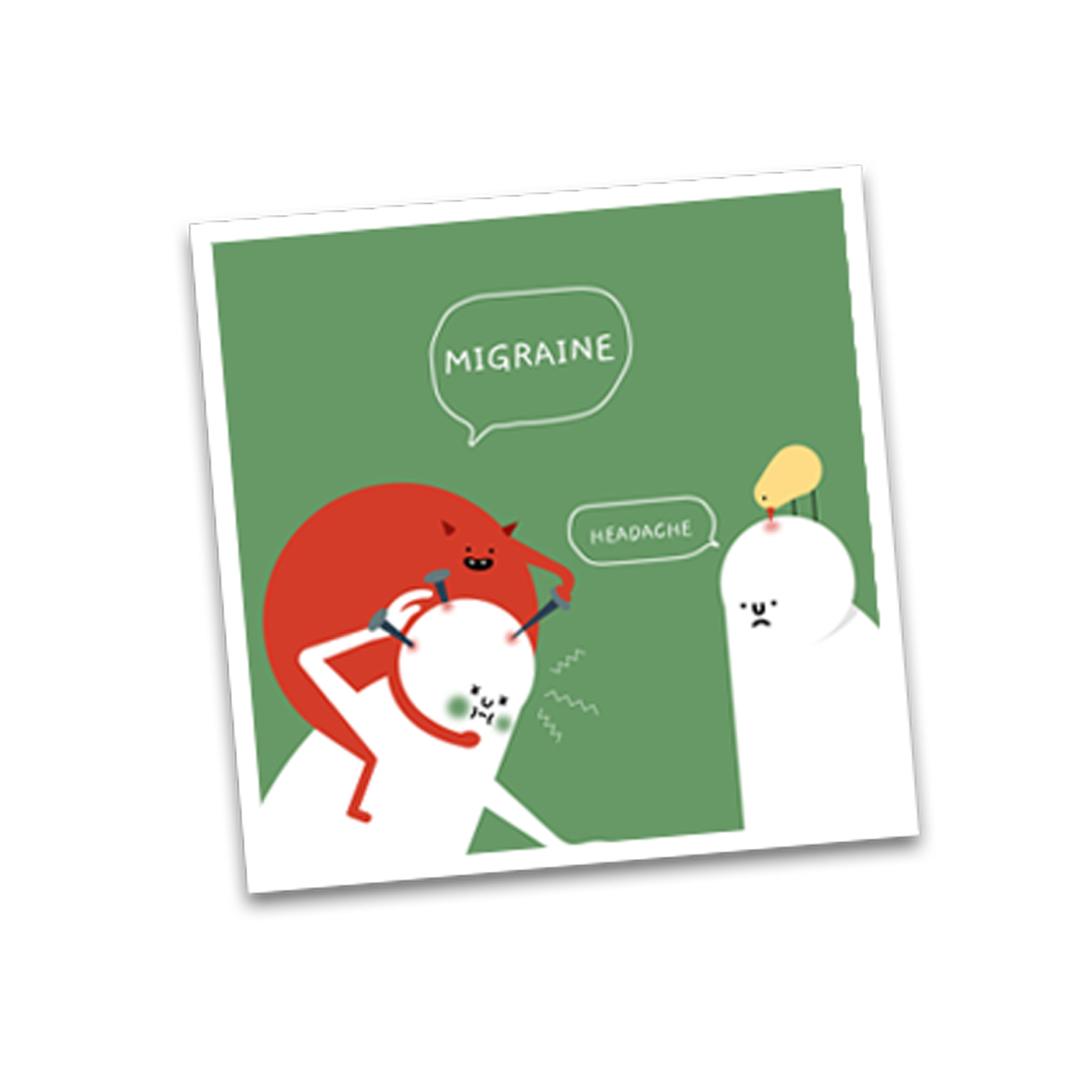Migraine myth #1: A migraine attack is a bad headache

Migraine is often misunderstood as just a bad headache, but what is it really? We don’t know what causes migraine, but what we do know is that migraine is a neurological condition that impacts our nervous system by causing temporary changes to the chemicals, nerves and blood vessels in our brain.1,4
Migraine attacks vary from person to person and the way you experience them can vary or change over time. You could have a migraine attack that lasts a few hours, or it could go on for several days.1 For some people migraine attacks can be infrequent, happening months or years apart, whereas others experience migraine attacks more regularly. For these reasons, migraine can be difficult for you to recognise and manage.
A migraine attack is typically felt as an intense, throbbing headache, usually to one side of the head.3,4 You may experience nausea and/or sensitivity to light or sound.3,4 Although the impact of migraine depends on the severity and frequency of attacks, for some, a migraine can be completely incapacitating, forcing them to miss out on many aspects of everyday life.2-4
Migraine myth #2: Just ‘dealing with it’ is better than prevention
Taking medication during an attack can be effective in controlling symptoms, but it is not a suitable solution for all migraine sufferers. For some people, stopping migraine attacks before they start is the key to regaining control, particularly those who experience frequent or persistent migraine symptoms.
If you are living with migraine, you’ll be all too aware of how painful and debilitating it can be, so reducing the frequency, intensity and/or duration of your migraine attacks can mean less time missing out and more time living life to its fullest.

Migraine myth #3: Tracking migraine is a waste of time

Keeping a migraine journal is one of the best ways to get a clearer picture about your migraine and its impact on your life.
A migraine journal is useful because migraines can have many triggers − changes in the weather, stress, natural fluctuations in hormones because of menstrual cycles, skipping meals, and others2,5. With so many triggers, it’s helpful to know which ones affect you.
Keeping a journal can also greatly improve the quality of conversation with your doctor because it helps your physician to know exactly how many attacks you are having, how debilitating they are, assess the effectiveness of your current medications and to tailor an individualised treatment plan.
Migraine Buddy* is an application, or app that helps people living with migraine record and identify triggers, symptoms, frequency and duration, and pain intensity and location of their migraines, as well as other lifestyle factors and any medication taken. The app, then provides an accurate, easy-to-read summary for you, which you can bring to your next doctor’s appointment.6
Migraine myth #4: Migraine is caused by stress or lack of exercise.
Though there are a number of triggers including stress, which could cause migraine attacks, migraine is actually a neurological disorder that affects our nervous system by causing temporary changes to the chemicals, nerves and blood vessels in our brain.1,4
Researchers are studying the role of serotonin (a type of brain chemical, which helps to regulate pain in your nervous system) in migraines. Other neurotransmitters also play a role in the pain of migraine, including calcitonin gene-related peptide (CGRP).

Migraine myth #5: Migraines don't occur often, and when they do strike, they're gone pretty quickly

The average migraine lasts from four to 72 hours1,4. Though each headache phase may last for a few hours, you may be impacted during the prodrome phase (characterised by premonitory symptoms of an impending migraine that can begin hours or days before a migraine episode) and be continued to be affected post headache (Postdrome).7 If you have 6 migraine attacks a month, you would have experienced 72 attacks a year and many more migraine affected days due to pre and post migraine attack symptoms. This can have an enormous impact on your work, family and social lives. You may lose even more time if your migraine attacks become more frequent or severe. Remember to include time lost during pre and post migraine attacks in your conversation with your doctor.